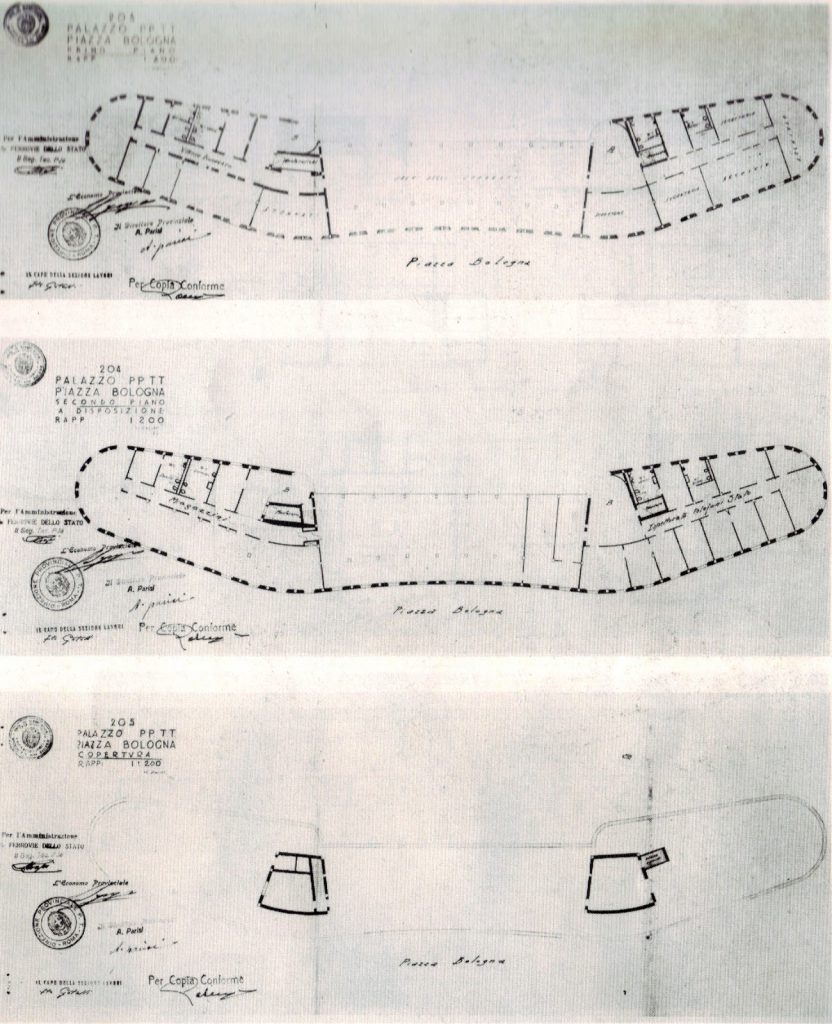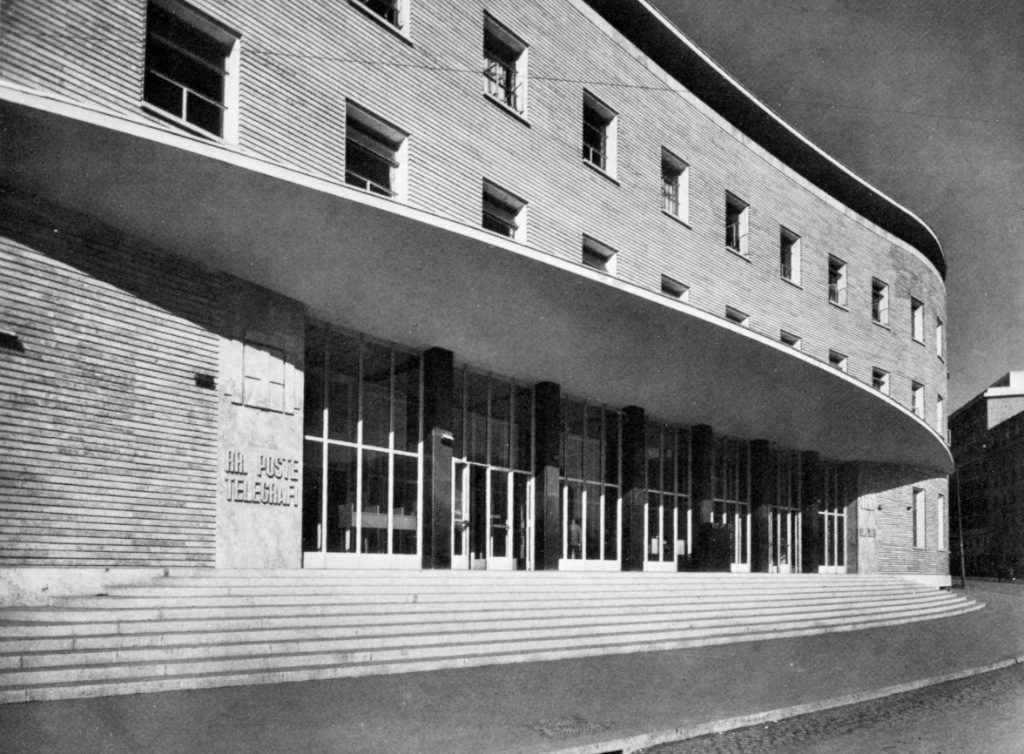The Post Office in Rome, built between 1933 and 1935, was part of the rationalist architectural period that was developed during the Benito Mussolini Fascist period in Italy. This building was part of the national plant of the dictatorship of being independent of the foreign trade by promoting a self-sufficient economy. Moreover, it was part of the decentralization of the service buildings, out of the historic centre of Rome.
El Palacio Postal en Roma, construido entre 1933 y 1935, fue parte del periodo arquitectónico racionalista que se instauró durante la Italia fascista de Benito Mussolini. Este edificio fue parte del plan nacional de la dictadura de no depender del comercio exterior fomentando una economía autosuficiente, y dentro de la ciudad de Roma, de una descentralización de los servicios del centro de la ciudad.

Mario Ridolfi won the first prize of the competition to design this new Post Office building with a project that was divided in three different volumes. Shortly after winning the competition, the architect modified the original project creating a compact volume that encloses Piazza Bologna with a strong symmetrical facade built with travertine marble. This material was used during the rationalist period to emphasize an abstract language and stand out the symbolism of the public buildings. Although Mario Ridolfi belonged to this period, he used a very expressive language that was close to the baroque style, both by the composition of the buildings and with the selected materials. The post office is a clear example of this expressionism. The symmetrical plan is deformed in the centre to enhance the access staircase. The sides of the building are curved creating a continuity effect that extends from the main facade to the lateral sides and back facade. The central canopy uses the same language as the roof of the last floor, continuing the formal plasticity of the building.
Mario Ridolfi gana el primer premio del concurso para diseñar este nuevo edificio postal con un proyecto que se dividía en tres cuerpos, aunque poco después se modificó creando un volumen compacto que cierra Piazza Bologna con una rotunda fachada simétrica construida en mármol travertino. Este material era utilizada durante el periodo racionalista italiano para resaltar el simbolismo de los edificios públicos y fomentar un lenguaje abstracto. Pese a pertenecer al periodo racionalista, Ridolfi utilizaba un lenguaje mucho más expresivo, cercano al barroco tanto en las composiciones en planta como en el uso de los materiales. El edificio postal es un claro ejemplo de este expresionismo. La planta simétrica se deforma en el centro resaltando la escalera de entrada y en los laterales se curva creando un efecto de continuidad que se extiende desde la fachada principal que da la plaza hasta sus fachadas laterales y traseras. La pérgola central utiliza el mismo lenguaje que la cubierta de la última planta y fomenta aún más la plasticidad formal del edificio.

















